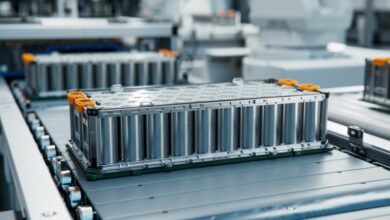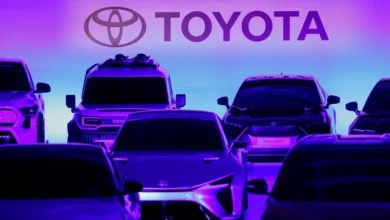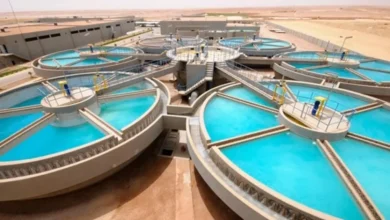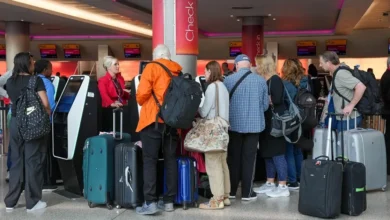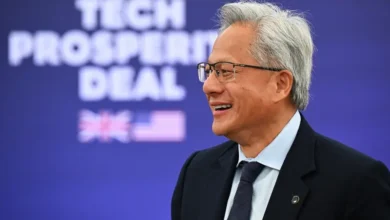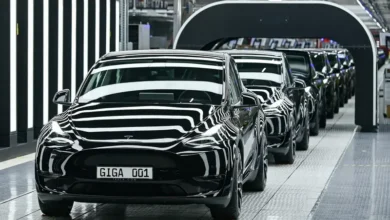Ghost factories are a warning sign for green manufacturing’s future
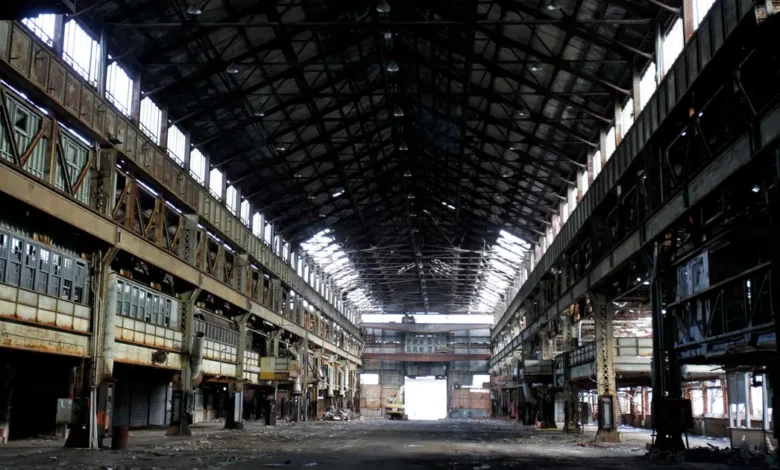
The vast tract of land off Route 85 was meant to be a symbol of Made-in-America manufacturing. A billion-dollar battery factory was going to rise, bringing thousands of new jobs.
The business announced, “Get Ready Arizona,” the governor said the state was thrilled and even the US president gave the project a shoutout.
But here, in the boomtown of Buckeye, less than an hour away from Phoenix, the 214-acre lot sits empty. Work on the site had started, said Shelby Lizarraga, who manages the gas station next door, “but then it went all quiet.”
Four years after the fanfare, battery maker Kore Power Inc. abandoned its plans for a plant in Buckeye. The company’s chief executive officer stepped down and a promised $850 million federal loan was cancelled.
Kore isn’t alone in its dashed ambitions. In Massachusetts, a wind turbine cable factory set to be built on the site of a former coal power plant was scrapped. In Georgia, the construction of a facility that would have made parts for electric vehicle batteries was suspended more than halfway through. And in Colorado, a lithium-ion battery maker said it wouldn’t go forward with its factory there, at least for now.
They’re among the dozens of planned green factories that have been cancelled, with more delayed or downsized, all hit by soaring costs, high interest rates and slow-growing EV demand.
About 9 percent of the $261 billion in green factory investment announced since 2021 has been shelved — most of it since President Donald Trump returned to office in January — according to research firm Atlas Public Policy.
Energy Secretary Chris Wright has said his agency doesn’t plan to move forward with some of the big-dollar loans that had been made to green manufacturing plants during President Joe Biden’s term.
Now there’s another, major threat to the sector: Trump’s massive tax-and-spending package, which rolls back Biden’s generous green subsidies.
Signed into law by Trump on Friday, it phases out credits for producing solar and wind energy years before they were designed to expire. It also ends federal tax credits for electric vehicles this September instead of in 2032.
Under Biden, a Democratic Congress passed the Bipartisan Infrastructure Law in 2021 and the Inflation Reduction Act a year later, setting aside hundreds of billions of dollars in incentives for clean-energy projects.
New factories were announced from South Carolina to Michigan to Arizona, set to churn out EVs, batteries and clean-energy parts. Biden and Democrats sought to bring manufacturing back to the US and make the country independent of, and competitive with, fast-electrifying China.
Many of the projects would be in red and purple states, shielding the policy against GOP attacks — or so the thinking went. That idea has now collapsed. (Among the members of Congress who voted for Trump’s bill was Paul Gosar, a Republican who represents Buckeye.)
Trump said at the signing that the country “is going to be a rocketship economically.” But fallout is likely to include more clean energy projects and the jobs they provide, or could have. Tesla Inc. Chief Elon Musk had lambasted the package on X as “severely damaging” to “industries of the future.”
The US pulling back now means it will lag other countries that have invested in green technologies, and that will hurt economic growth and boost reliance on overseas manufacturers long term, said Hannah Hess of Rhodium Group, a research firm.
“There’s also the risk of stranded investments, a sizable amount,” she said.
Lithium-ion battery manufacturers like Kore face strict rules on using foreign components, plus knock-on effects from the solar and EV credit phaseouts.
Because of the former, fewer grid batteries will be installed over the next decade, according to the research group Energy Innovation. The demise of the EV credit will likely dent consumer appetite for electric vehicles — and by extension, demand for the batteries they run on.
Buckeye — a former farming town named by settlers from Ohio — is a hotbed of building activity. Close to the Kore site is the suburban sprawl that’s come to characterize the Phoenix area’s rapid growth. Concrete is being poured in foundations and piles of rebar are stacked on construction sites, where tracts of desert are being transformed into new neighborhoods.
Executives at Kore had scoured 300 sites across the country before settling on Buckeye. Land was cheap, it was close to major West Coast ports and Arizona’s dry climate wouldn’t impair the chemistry of lithium-ion batteries. The company announced its factory in 2021, planning to start construction that year and roll out batteries in 2023. It would be Buckeye’s biggest employer, creating 3,000 jobs.
But as executives drew up construction plans, inflation hiked costs, while rising interest rates made financing more expensive. And the project got mired in the same slow permitting that stalls projects nationwide.
Costs swelled to $1.25 billion from $1 billion, so the company made adjustments to control expenses — even downsizing the factory — and worked aggressively to keep the project alive, Kore’s current CEO Jay Bellows said in a telephone interview. “We were trying to move as fast as we could,” Bellows said. “But ultimately, the costs were just really high.” The battery maker later got a loan commitment from the Energy Department.
Kore ended up getting approvals to move forward with construction in 2024, almost a year after it had wanted to start producing batteries. And then uncertainty loomed over the fate of federal green incentives if Trump were to win the election.
In Buckeye’s city hall, about 10 minutes away from Kore’s site, Mayor Eric Orsborn sensed that things were amiss. The project’s timeline kept getting longer and delays dragged out. “Things slipped a little bit more, a little bit more,” he said in an interview in his office.
Kore then said it was ending its plans to build in Buckeye, 10 days after Trump was sworn in. It’s one of 53 out of 715 green factories announced since 2021 that have been cancelled, according to Atlas Public Policy.
The outlook for green enterprises has darkened as policy shifts unsettle manufacturers, with EV makers feeling it the most, said Matt Shanahan of Marathon Capital, an investment bank focused on the energy transition. “The rules have changed,” he said.
The pace of cancellations and delays depends on how the market reacts to the law, he added, but early-stage projects are especially at risk. “To break ground on a new facility — I think it’s very challenging right now.” Energy storage may remain more resilient thanks to surging data center demand, he said.
Kore is now on the hunt for an existing building to move into, with power and infrastructure in place so it can save money and get to market faster, Bellows said. Looking back, he said he learned the need to move more quickly and efficiently. The company tried, he said, but “it’s a long, arduous process” to go from dirt to a fully operating factory.
Even so, other green facilities in the region are forging ahead. In Queen Creek, another fast-growing community that’s about 80 miles to the west of Buckeye, construction is underway on a $3 billion EV battery facility by LG Energy Solution.
Cranes tower over the sprawling site, while bulldozers kick up plumes of desert dust as forklifts scuttle by. The project has faced its own challenges — construction was paused for some time last year as the company scrapped plans for a bigger plant.
But now the factory is set to open next year, and LG plans to employ 1,500 workers there by 2027. The company said in an April press release that it aims to contribute to a “local battery ecosystem” and that it will hire locally.
“It’s a manufacturing powerhouse,” Queen Creek Mayor Julia Wheatley said in an interview, adding that the town is seeing strong interest from companies looking to move near the plant.
On a Monday in late June, the empty Kore plot scorched in 100F-plus heat. Nearby, desert gave way to parcels of farmland, discount stores and palm-tree-lined neighborhoods. Dairy cows took shade from the heat, while trucks stacked with hay bales hurtled by.
Across the road, Joe Skoog, who runs a trucking company, said he would have liked to have pitched his business to Kore had the factory gone ahead. But he didn’t see the cancellation as much of a setback for the growing region. “Come back in five, 10 years’ time, and there will be more manufacturers and warehouses, and fewer farms,” he said.
Orsborn, Buckeye’s mayor, said he was disappointed, but not disheartened. He enthused about Buckeye’s population boom, fueled by Californian transplants, the big-box retailers and movie theaters opening up and how Kore’s shovel-ready site — with power, water and infrastructure now installed — is now even more attractive for other businesses that want to move in.
“Maybe another green energy one will,” he said.

